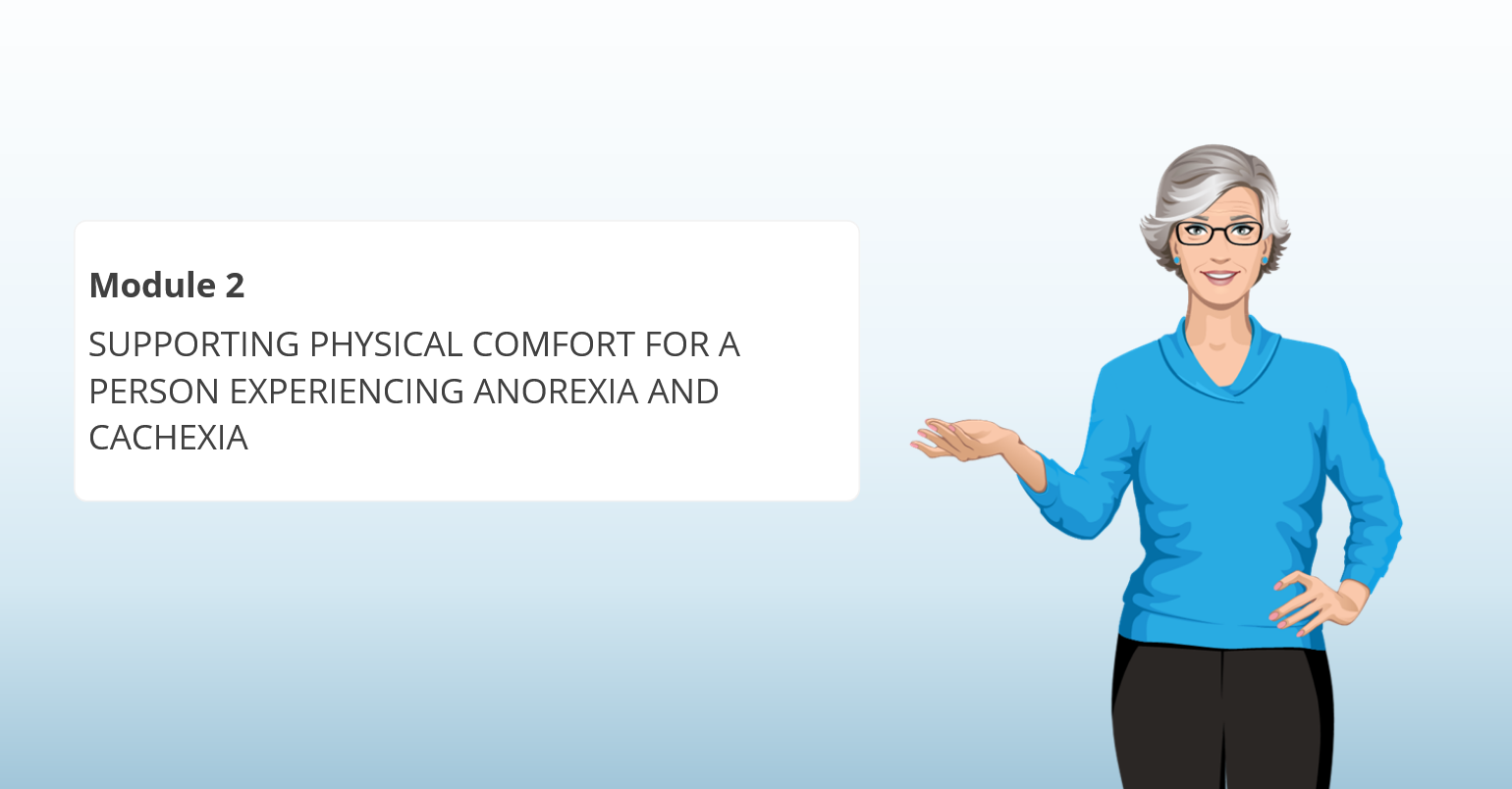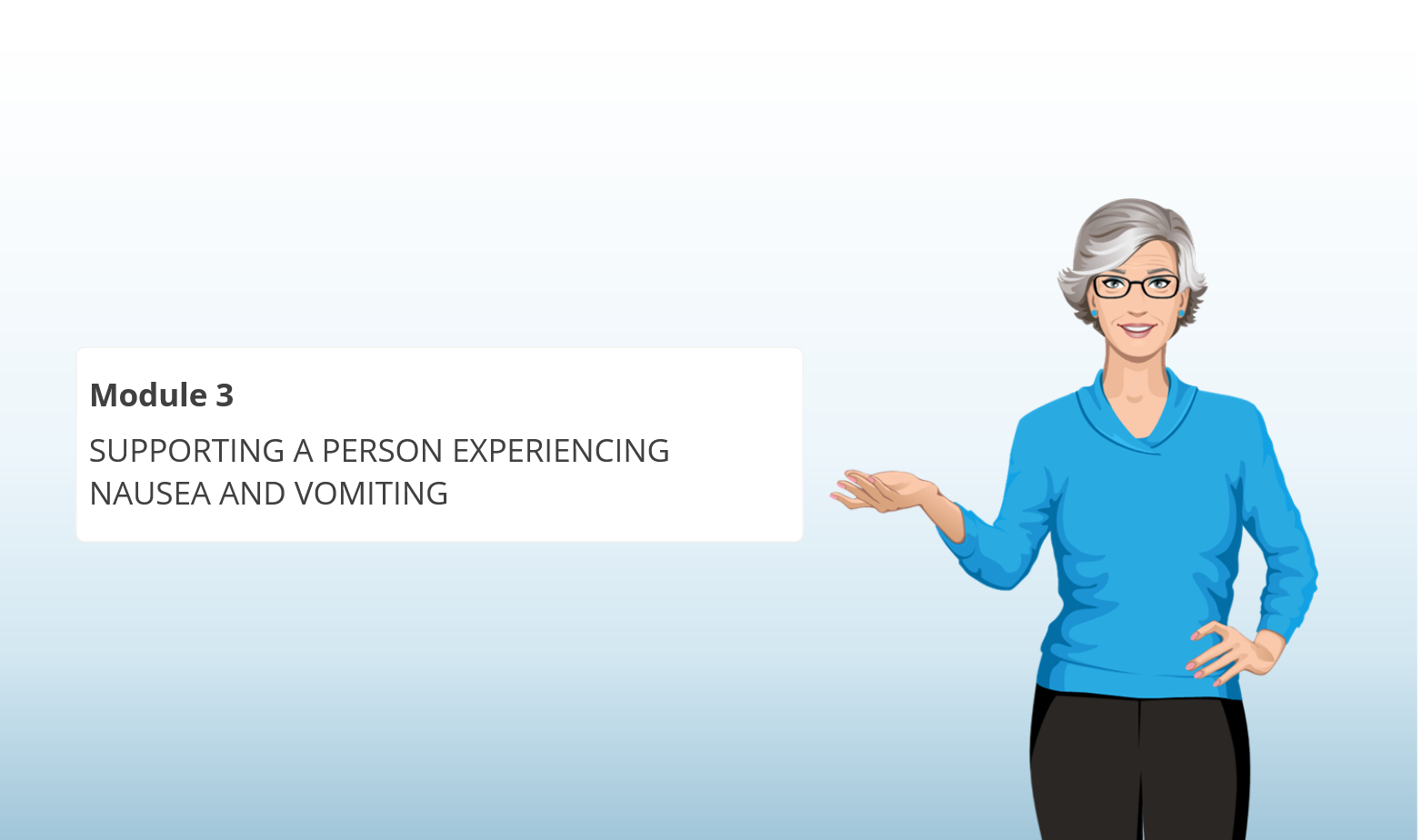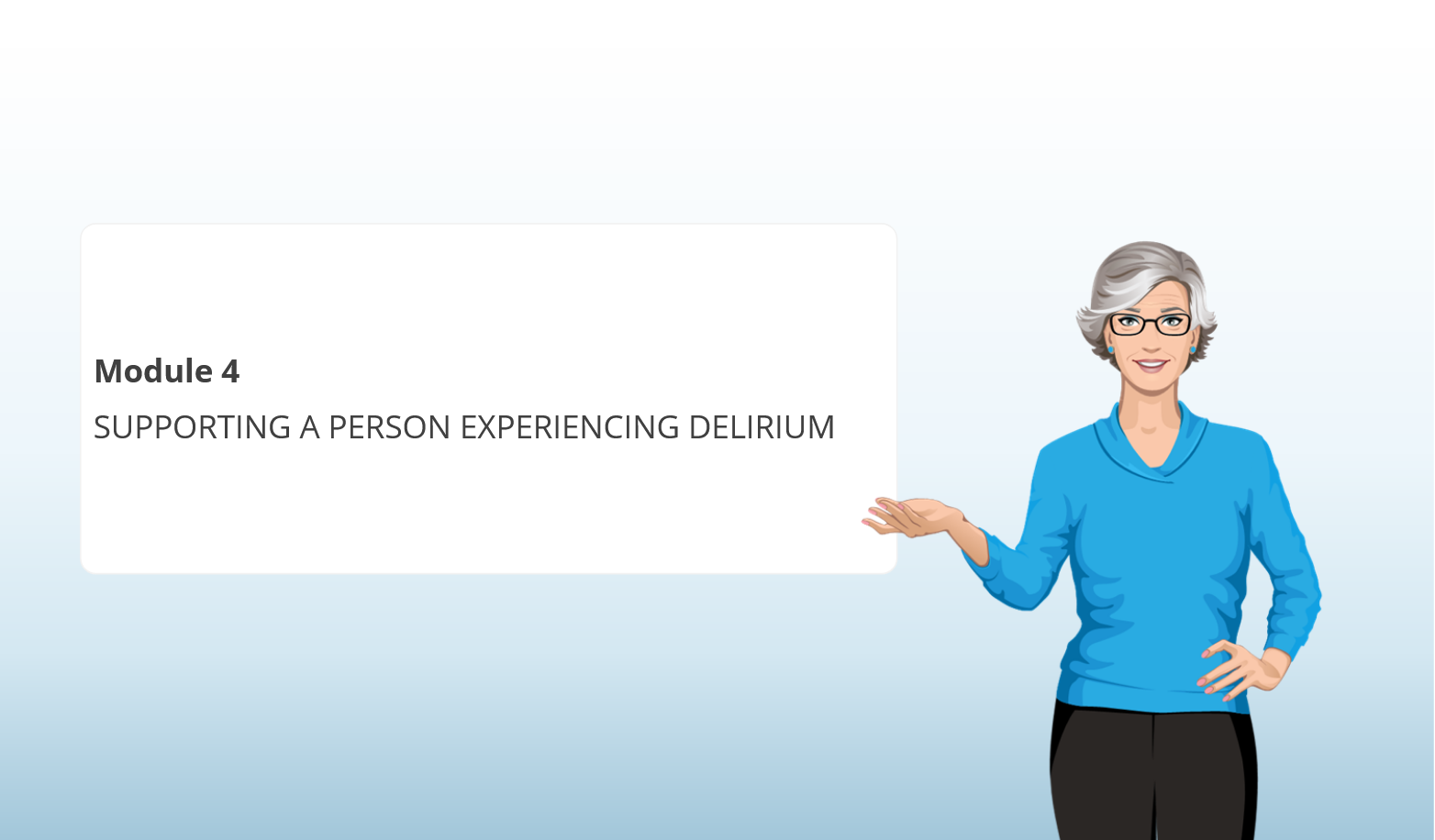5. Supporting Physical Comfort: Part 2
"PSWs are often called the eyes and the ears of the health care team."
This course discusses the common symptoms of dyspnea, anorexia and cachexia, nausea and vomiting, and delirium, and the ways that PSWs can support the comfort of a person experiencing a symptom.
In this course, you will build on your skills for using standardized tools while learning about these common symptoms, the causes, medications, treatments and comfort measures. Through the course, you will build skills in communicating with the team and advocating for the person's care wishes.
Course Overview
PSWs are often considered the eyes, the ears and the hands of the health care team - and so it make sense that PSWs are usually the first to notice changes or a new symptom. This course provides all the tools, tips and comfort measures for supporting a person experiencing any of the following symptoms:
- Dyspnea
- Anorexia and cachexia
- Nausea and vomiting
- Delirium
Learn to recognize these symptoms, gather information, record and report to the team. Develop skills in communicating and collaborating with the team to support a person's comfort. Develop your ability to support a person's care wishes, and advocate for their beliefs and values in care planning.
Learning Outcomes
At the end of this course, students will be able to:
- Explain the PSW's unique position on the care team, that makes it most likely PSWs will first notice changes in a person’s health.
- Understand that PSWs noting any change in the person’s health must communicate this to the team and that this information should trigger an essential conversation about the person’s wishes.
- Discuss the PSWs responsibility for being informed about a person’s advance care plans and care wishes.
- Demonstrate ways to advocate for the incorporation of people’s and their designated family or caregivers’ values and beliefs into the care plan.
- Using the Symptom Framework for PSWs, ask about the person’s understanding and their values regarding the symptom, and contribute this information to the person’s care plan and advance care plan.
- Use best practice skills of listening, pausing, asking open-ended questions, and avoiding roadblocks to communication to create an encouraging and supportive environment for a person to share information about their care wishes.
- For each of the following symptoms - dyspnea, anorexia, cachexia, nausea, vomiting, delirium, be able to describe the symptom, gather information, communicate with the team, help manage the symptom with comfort measures and support the family.
Resources
In this course, you will need:
- Access to a printer
- Three (3) disposable straws for a learning activity
- A writing journal or book for taking notes and writings.
- Google Chrome is the recommended internet browser for these courses.

Certificate
Individual course certificates of completion can be downloaded from
the MY COURSES page after passing the quiz with a grade of 70% or
higher.
Quiz Completion
If you cannot submit your completed
quiz for grading, it is possible that you may not have opened every
slide and allowed the timeline to complete. To correct this issue,
return to the modules and check or play every slide to the end of the
timeline.
Please login or register for an account to enrol in courses. Use this link
Included:
Module 1 Learning Outcomes and Dyspnea

Supplies for Course Activities
You will need three (3) disposable straws for an activity in Module 1. The straws need to be flexible but can be composed of cardboard or plastic.
DOWNLOAD FILES: Click the links below:
Worksheet for recording notes
Learning Outcomes
Dyspnea Role Play Guide
Module 2: Anorexia and Cachexia

Module 2 describes anorexia in the context of its occurrence at end-of-life, and cachexia; two common symptoms that people may experience as they decline. You will learn ways to identify these symptoms, to gather information on the person's experience to report to the nurse and team, and ways to support comfort.
Module 3: Nausea and Vomiting

Nausea and vomiting may occur at any time during a person's decline, as there are multiple causes of both nausea and vomiting. Learn the questions to ask for gathering information on these symptoms, and ways to support the comfort of the person as well as support family.
Module 4: Delirium

Family may find delirium one of the most distressing symptoms to witness. Learn how to recognize delirium and how to provide comfort for the person and support family.
Module 5: Course Quiz
Welcome to the final module for this course.
Requirements: 70% or greater to pass the course.
3 opportunities to pass the quiz.
The answer key is shown only after you have passed the quiz.
Check here before starting the quiz
Have you viewed, or clicked on all slides of all modules?
If you have missed any slides, the quiz will NOT be graded.
You will know you have missed slides if you submit the quiz for grading, and you do not get a grade for it within minutes.
How to fix this
- Go back into the modules, select "Menu" in the top left (red circle in image below). This view displays all the slides in the module.
- A viewed slide will have a check mark beside it (Red arrows are pointing at the check marks).
- If a slide does not have a check mark beside it, click the title to set it as viewed. A check mark will appear.
- Repeat this process for all modules of the course.
- When finished, open the quiz module. You will now be able to submit the quiz for grading.

Good luck!